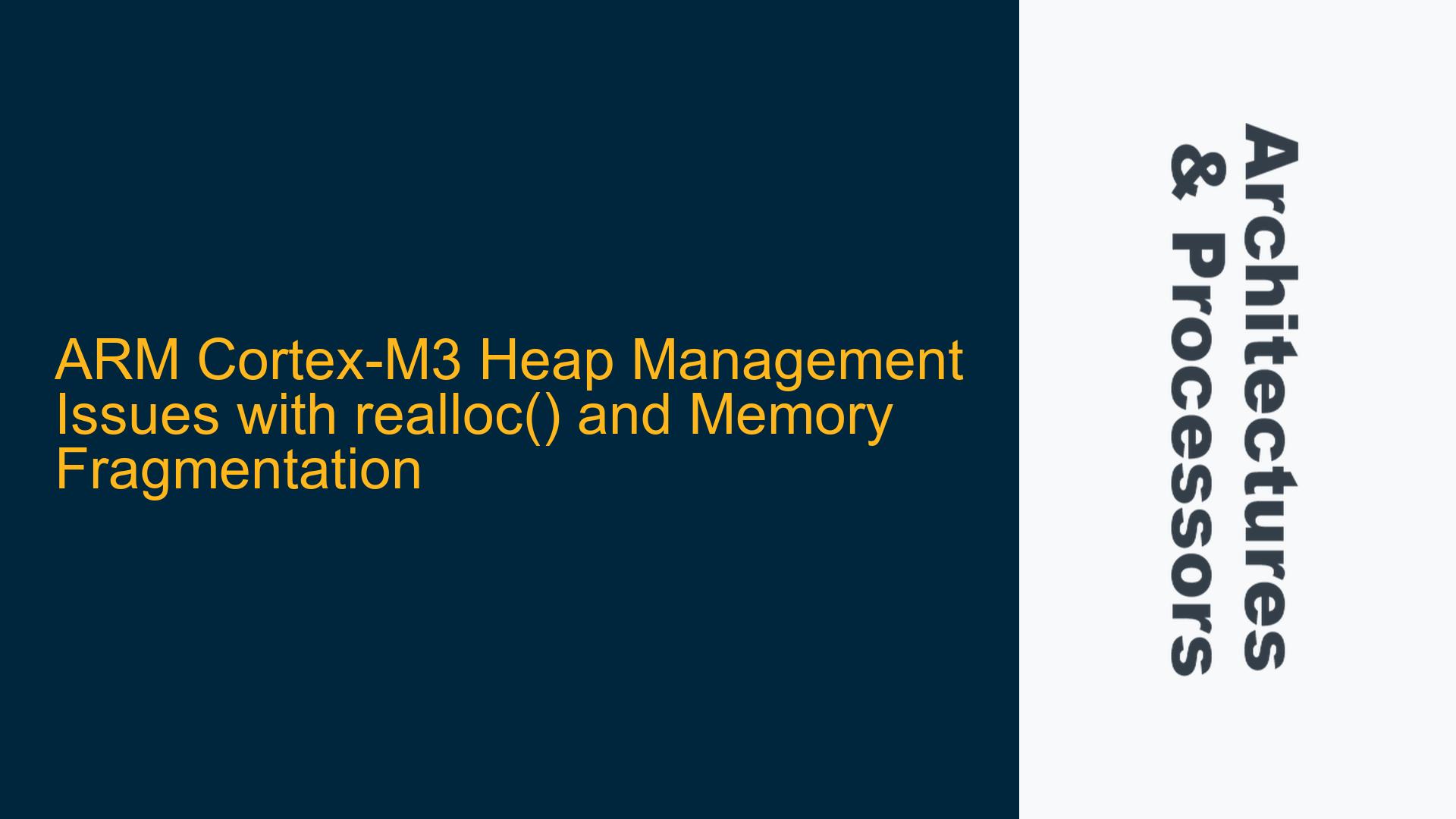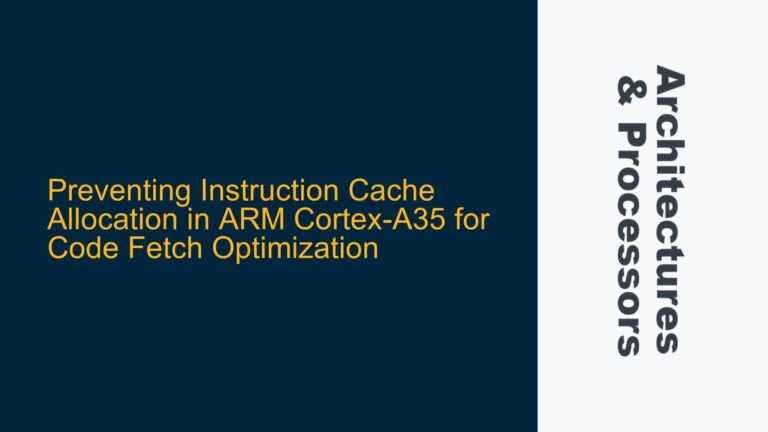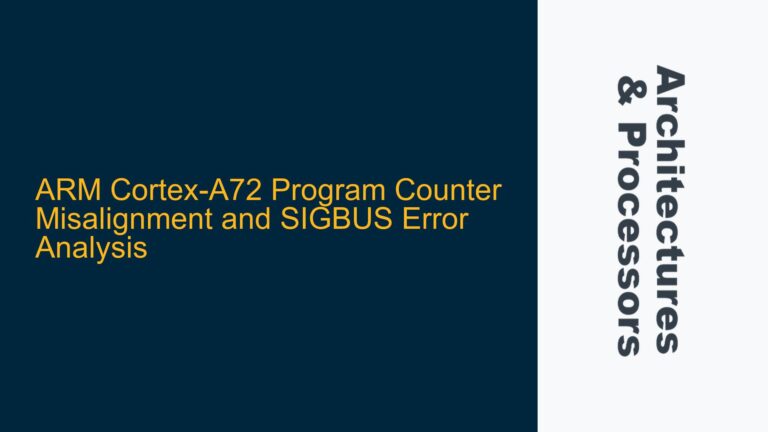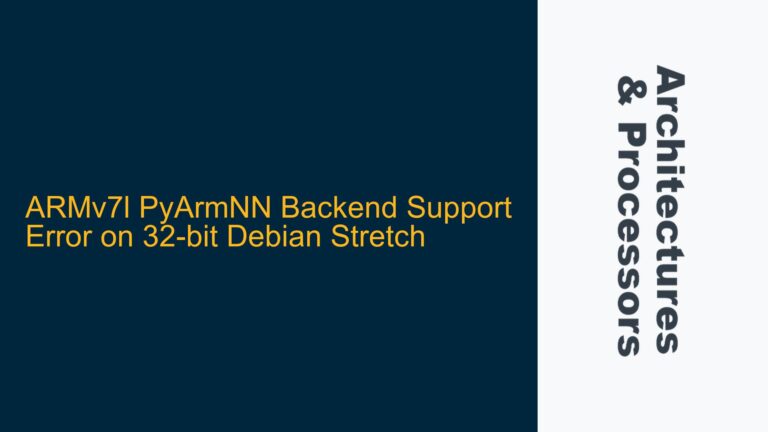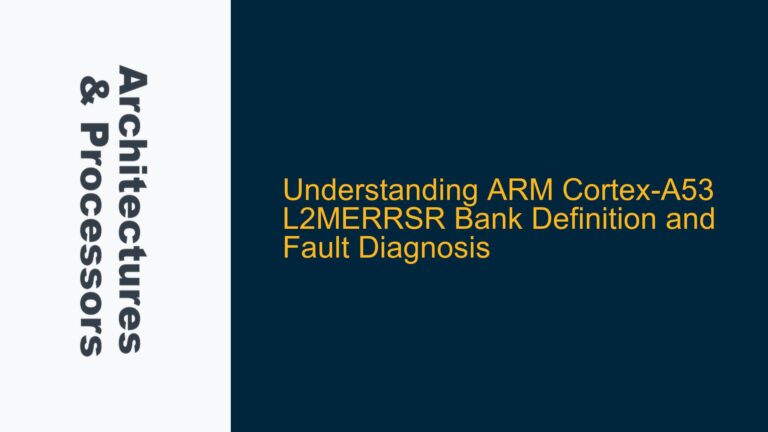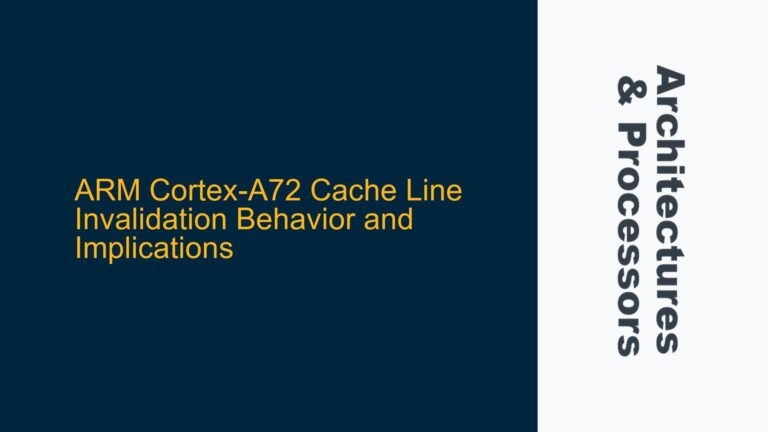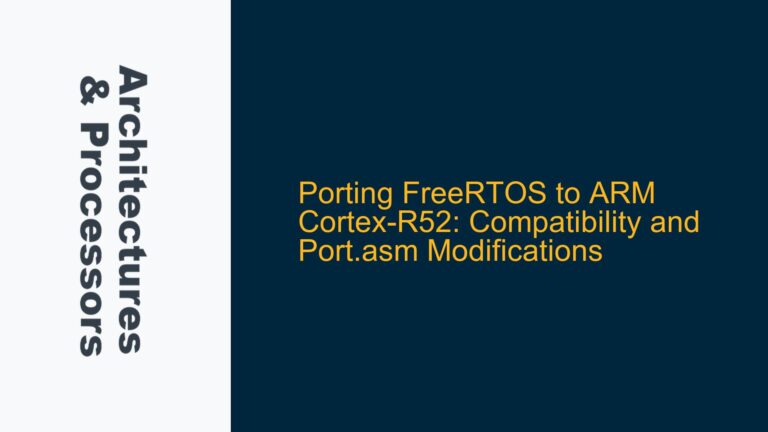ARM Cortex-M3 Heap Allocation Behavior with realloc()
When working with dynamic memory allocation on ARM Cortex-M3 microcontrollers, developers often encounter unexpected behavior when using the realloc() function. The primary issue arises when reducing the size of a previously allocated memory block using realloc(). The expectation is that the unused portion of the memory block will be freed and made available for future allocations. However, in practice, the heap manager may not release the excess memory, leading to inefficient memory usage and potential fragmentation.
The Cortex-M3, being a resource-constrained microcontroller, typically lacks a Memory Management Unit (MMU) and relies on a simple heap management scheme. The realloc() function, as implemented in the standard C library for embedded systems, does not guarantee that reducing the size of a memory block will immediately free the excess memory. This behavior is influenced by the underlying heap management strategy, which often rounds up memory allocations to fixed block sizes to optimize performance and reduce fragmentation.
For example, consider the following code snippet:
uint8_t *a = malloc(1000);
uint8_t *b = realloc(a, 100);
uint8_t *c = malloc(100);
Here, the developer expects that after reducing the allocation from 1000 bytes to 100 bytes using realloc(), the remaining 900 bytes will be freed and available for subsequent allocations. However, the heap manager may retain the original 1000-byte block, leading to the allocation of an additional 100 bytes when malloc(100) is called, resulting in a total heap usage of 1100 bytes instead of the expected 200 bytes.
Memory Allocation Strategies and Fragmentation in Embedded Systems
The behavior of realloc() on ARM Cortex-M3 microcontrollers is heavily influenced by the memory allocation strategy employed by the heap manager. Embedded systems often use a fixed-block memory allocation scheme, where memory is divided into fixed-size blocks. When a memory allocation request is made, the heap manager rounds up the requested size to the nearest block size. This rounding ensures that memory allocations are aligned and reduces the overhead associated with managing variable-sized blocks.
However, this strategy can lead to inefficiencies when using realloc(). When the size of a memory block is reduced, the heap manager may not immediately split the block into smaller chunks. Instead, it may retain the original block size to avoid fragmentation and reduce the overhead of managing multiple small blocks. This behavior is particularly common in systems with limited memory and no MMU, where memory fragmentation can severely impact performance.
Additionally, the heap manager may implement a lazy deallocation strategy, where unused memory is not immediately freed but instead marked as available for future allocations. This approach reduces the overhead of frequent memory deallocations but can lead to increased memory usage over time. In the context of the Cortex-M3, where memory resources are limited, this behavior can be problematic, especially in long-running applications where memory fragmentation can accumulate.
Optimizing Heap Usage and Mitigating Fragmentation on Cortex-M3
To address the issues associated with realloc() and heap management on ARM Cortex-M3 microcontrollers, developers can adopt several strategies to optimize memory usage and mitigate fragmentation. These strategies include:
1. Custom Heap Management: Implementing a custom heap manager tailored to the specific requirements of the application can provide greater control over memory allocation and deallocation. A custom heap manager can be designed to handle variable-sized blocks more efficiently, reducing the overhead associated with fixed-block allocation schemes. Additionally, a custom heap manager can implement more aggressive deallocation strategies, ensuring that unused memory is promptly freed and made available for future allocations.
2. Memory Pool Allocation: Using memory pools is another effective strategy for managing dynamic memory in embedded systems. Memory pools pre-allocate fixed-size blocks of memory for specific tasks or data structures, reducing the need for dynamic memory allocation and deallocation. This approach minimizes fragmentation and ensures predictable memory usage, making it well-suited for resource-constrained systems like the Cortex-M3.
3. Avoiding realloc(): In many cases, avoiding the use of realloc() altogether can simplify memory management and reduce fragmentation. Instead of resizing memory blocks, developers can allocate new blocks of the required size and manually copy data from the old block to the new one. While this approach may increase code complexity, it provides greater control over memory usage and avoids the pitfalls associated with realloc().
4. Heap Defragmentation: Implementing a heap defragmentation routine can help mitigate fragmentation over time. Defragmentation involves consolidating free memory blocks and rearranging allocated blocks to create larger contiguous free regions. While defragmentation can be computationally expensive, it can be performed periodically or during idle periods to maintain efficient memory usage.
5. Monitoring Heap Usage: Regularly monitoring heap usage using tools like mallinfo() can help identify memory leaks and fragmentation issues early in the development process. By tracking heap usage over time, developers can gain insights into the memory allocation patterns of their application and make informed decisions about optimizing memory usage.
In conclusion, the behavior of realloc() on ARM Cortex-M3 microcontrollers is influenced by the underlying heap management strategy, which often prioritizes performance and fragmentation avoidance over immediate memory deallocation. By understanding the limitations of the standard heap manager and adopting alternative memory management strategies, developers can optimize memory usage and mitigate fragmentation in their embedded applications.
